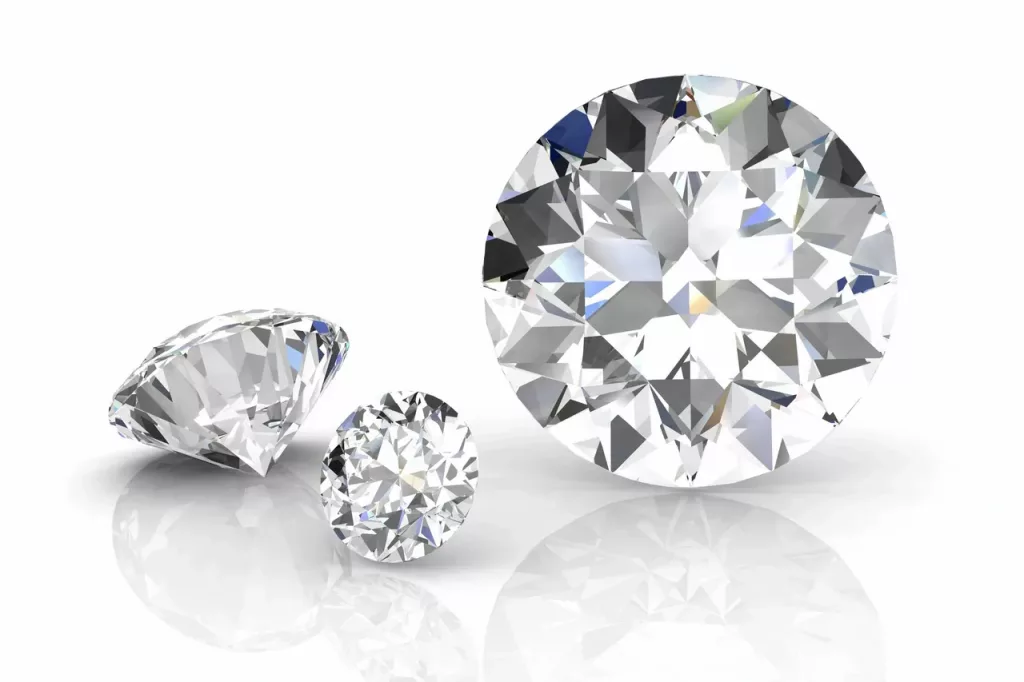4 September 2020|Investing, Latest Posts

Investing in diamonds can be incredibly rewarding, but only if you know your stuff. For inexperienced investors finding your diamond in the rough can be quite daunting.
Some essentials are fairly obvious to even the most beginners of diamonds investors. For instance, the value retention of the diamond over time, overall condition of the stone and the jewellery, and the history behind the item in question.
However, to go from beginner to expert, we often need insider tips and tricks from the best. Tony French, the in-house Diamond Consultant, at Diamonds Factory shares his expert knowledge on the 5 most important things to look for when investing in diamonds.
1: Using cut, weight and colour to determine value
When investing in diamonds it’s incredibly important to consider the shape, colour, and weight of your diamond, as this can play a huge part in ensuring the growth in value of your purchase. Although trends in investing change over time, a round cut of your diamond will more often than not always be the most sought after. The cut of your diamond is extremely important, as it can influence the sparkle and therefore, the overall value. The same can be said for the intensity of some colours, such as Blue, Red, Pink, Green etc. Regarding weight, the heavier (bigger) stones will often increase in value by a bigger percentage. All of these factors also contribute to the supply and demand aspect which keeps prices high, and will ensure your item is re-sellable.
2: Provenance
It goes without saying that owning jewellery or diamonds that comes from an important public figure will bring significant value. However, here’s the important part, if you can own a piece that has significant history, or was owned by a celebrity or person of interest, it’s an absolute must to have proof of this. Not only will this increase an item’s overall value, but this will likely gain traction within a field of interest such as fans of that person.
It is possible to proactively bring provenance to unique diamonds that you own. For example, you can offer to loan unusual, or bespoke pieces to actors or artists for film, theatre, or TV performances – then it can be advertised as worn by….
3: Find the source
Identifying and evaluating the source of the diamond is one of the most important things you can do when investing in diamonds. When starting out, try to buy diamonds that have NOT been owned by too many people, as everyone in the chain will take a cut and their value will reflect multiple ownership. Alternatively, I’d always recommend buying from suppliers like ourselves or other vendors who buy directly from the people who have had them certified.
Firstly this will allow you to have a greater amount of transparency, which is crucial when purchasing such a valuable item. Secondly, you should see an immediate increase in value in your diamonds, as establishing a source will enable traceability and therefore, market perspective.
4: Certification
Inherently linked with my previous point, is the necessity to ensure that your diamonds are certified by a credible lab, and you have the evidence to prove so (a written document with specific grading details about your diamonds) – this will remove any doubts of impropriety.
It’s important to remember that not all labs are the same, and many labs are better than others. Both the GIA (Gemological Institute of America) and AGS (American Gem Society) for example have great reputations and are world renowned. I’d suggest doing some research when you’ve found the pieces that you’d like to invest in and then make a decision based upon your findings surrounding certification. Ultimately, proving certification will make your stones easier to insure and, personally you can have peace of mind knowing you have got what you have paid for.
Don’t forget to keep this paperwork in a safe location as well – you’d be surprised how many people we’ve met who have lost, or forget where they’ve placed it.
5: Patience is a virtue…
If the market is strong, it might be tempting to look for an immediate sale once you’ve purchased a high value piece, but I recommend keeping your diamonds for some time before even thinking about selling. Generally speaking, an item is more likely to increase in value over a few years than a few days, therefore try and be patient!
Equally, I would consider having your jewellery, or diamonds professionally valued regularly. If you don’t have the expertise to make a rough judgement on how much your pieces are worth, a consultant or expert can provide both a valuation, and contextualise that amount in the wider market. From there, you should be empowered with the knowledge to decide whether to keep, or sell.
- lisafoundersite
- lisafoundersite
- lisafoundersite
- lisafoundersite






